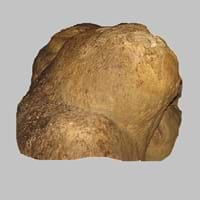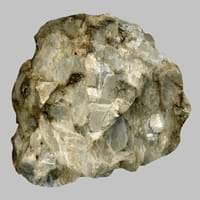Definition
Travertine is a mineral consisting of layered calcium carbonate formed by deposition from spring waters
Sovite is a coarse-grained variety of carbonatite which belongs to intrusive igneous rock
Discoverer
Marcus Vitruvius Pollio
Unknown
Etymology
From Italian travertino a kind of building stone, from Tiburs, adjective from Tibur (Tivoli), in Italy
Not Available
Class
Sedimentary Rocks
Igneous Rocks
Sub-Class
Durable Rock, Medium Hardness Rock
Durable Rock, Soft Rock
Group
Not Applicable
Plutonic
Other Categories
Fine Grained Rock, Opaque Rock
Coarse Grained Rock, Fine Grained Rock, Medium Grained Rock, Opaque Rock
Texture
Banded
Granular, Poikiloblastic
Color
Beige, Black, Blue, Brown, Grey, Red, White, Yellow
Black, Brown, Colourless, Green, Grey, Pink, White
Durability
Durable
Durable
Scratch Resistant
Yes
Yes
Appearance
Fibrous
Dull, Banded and Foilated
Interior Uses
Decorative Aggregates, Entryways, Flooring, Homes, Interior Decoration
Decorative Aggregates, Homes
Exterior Uses
As Building Stone, As Facing Stone, Paving Stone, Garden Decoration, Office Buildings
As Building Stone, Garden Decoration, Office Buildings
Other Architectural Uses
Curbing
Curbing
Construction Industry
As Dimension Stone, Building houses or walls, Cement Manufacture, Construction Aggregate, for Road Aggregate, Raw material for the manufacture of mortar
As a Flux in the Production of Steel and Pig Iron, As a Sintering Agent in Steel Industry to process Iron Ore, As Dimension Stone, Cement Manufacture, for Road Aggregate, Making natural cement, Manufacture of Magnesium and Dolomite Refractories, Unknown, Unknown
Medical Industry
Not Yet Used
Taken as a Supplement for Calcium or Magnesium
Antiquity Uses
Artifacts, Jewellery, Monuments, Sculpture, Small Figurines
Artifacts
Commercial Uses
Cemetery Markers, Creating Artwork, Gemstone, Jewelry, Paper Industry, Pottery
An Oil and Gas Reservoir, As a Feed Additive for Livestock, Creating Artwork, Gemstone, Metallurgical Flux, Production of Lime, Soil Conditioner, Source of Magnesia (MgO)
Types
Not Available
Not Available
Features
Stalactites and stalagmites are formed from this rock, Surfaces are often shiny, Very fine grained rock
Available in lots of colors, Generally rough to touch, Is one of the oldest rock
Archaeological Significance
Monuments
Used
Not Yet Used
Famous Monuments
Colosseum in Rome, Italy, Sacré Coeur in Paris, France, Trevi Fountain in Rome, Italy
Not Applicable
Sculpture
Used
Not Yet Used
Famous Sculptures
Data Not Available
Not Applicable
Figurines
Used
Not Yet Used
Formation
Travertine is a type of sedimentary rock formed when a river carries or transports pieces of broken rock which then undergo sedimentation. They are then subjected to high temperature and pressure hence forming travertine rock.
Sovites are formed due to low degrees of partial melting of rocks.
Mineral Content
Calcite, Clay, Feldspar, Micas, Quartz
Ancylite, Apatite, Barite, Fluorite, Magnetite, Natrolite, Sodalite
Compound Content
Ca, NaCl, CaO, Oxygen
CaO, Carbon Dioxide, Sodium Oxide
Types of Metamorphism
Not Applicable
Burial Metamorphism, Cataclastic Metamorphism, Contact Metamorphism, Hydrothermal Metamorphism, Impact Metamorphism, Regional Metamorphism
Types of Weathering
Biological Weathering, Chemical Weathering, Mechanical Weathering
Biological Weathering, Chemical Weathering, Mechanical Weathering
Types of Erosion
Chemical Erosion, Coastal Erosion, Glacier Erosion
Chemical Erosion, Coastal Erosion, Glacier Erosion, Sea Erosion, Water Erosion, Wind Erosion
Grain Size
Fine Grained
Medium to Fine Coarse Grained
Fracture
Splintery
Conchoidal
Porosity
Highly Porous
Less Porous
Luster
Dull to Pearly
Subvitreous to Dull
Compressive Strength
Not Available
Cleavage
Non-Existent
Not Available
Specific Gravity
1.68
2.86-2.87
Transparency
Opaque
Opaque
Density
2.71 g/cm3
2.84-2.86 g/cm3
Specific Heat Capacity
Not Available
Resistance
Impact Resistant, Pressure Resistant, Wear Resistant
Heat Resistant, Pressure Resistant
Deposits in Eastern Continents
Asia
China, Russia
China, India, Kazakhstan, Mongolia, Russia, Uzbekistan
Africa
Not Yet Found
Namibia, Nigeria, South Africa
Europe
Austria, Italy, Portugal, United Kingdom
Austria, Denmark, Germany, Great Britain, Netherlands, Norway, Poland, Sweden, Switzerland, United Kingdom
Others
Not Yet Found
Greenland
Deposits in Western Continents
North America
Canada, USA
Canada, USA
South America
Argentina, Bolivia, Ecuador
Brazil
Deposits in Oceania Continent
Australia
Not Yet Found
New South Wales, New Zealand
All about Travertine and Sovite Properties
Know all about Travertine and Sovite properties here. All properties of rocks are important as they define the type of rock and its application. Travertine belongs to Sedimentary Rocks while Sovite belongs to Igneous Rocks.Texture of Travertine is Banded whereas that of Sovite is Granular, Poikiloblastic. Travertine appears Fibrous and Sovite appears Dull, Banded and Foilated. The luster of Travertine is dull to pearly while that of Sovite is subvitreous to dull. Travertine is available in beige, black, blue, brown, grey, red, white, yellow colors whereas Sovite is available in black, brown, colourless, green, grey, pink, white colors. The commercial uses of Travertine are cemetery markers, creating artwork, gemstone, jewelry, paper industry, pottery and that of Sovite are an oil and gas reservoir, as a feed additive for livestock, creating artwork, gemstone, metallurgical flux, production of lime, soil conditioner, source of magnesia (mgo).









